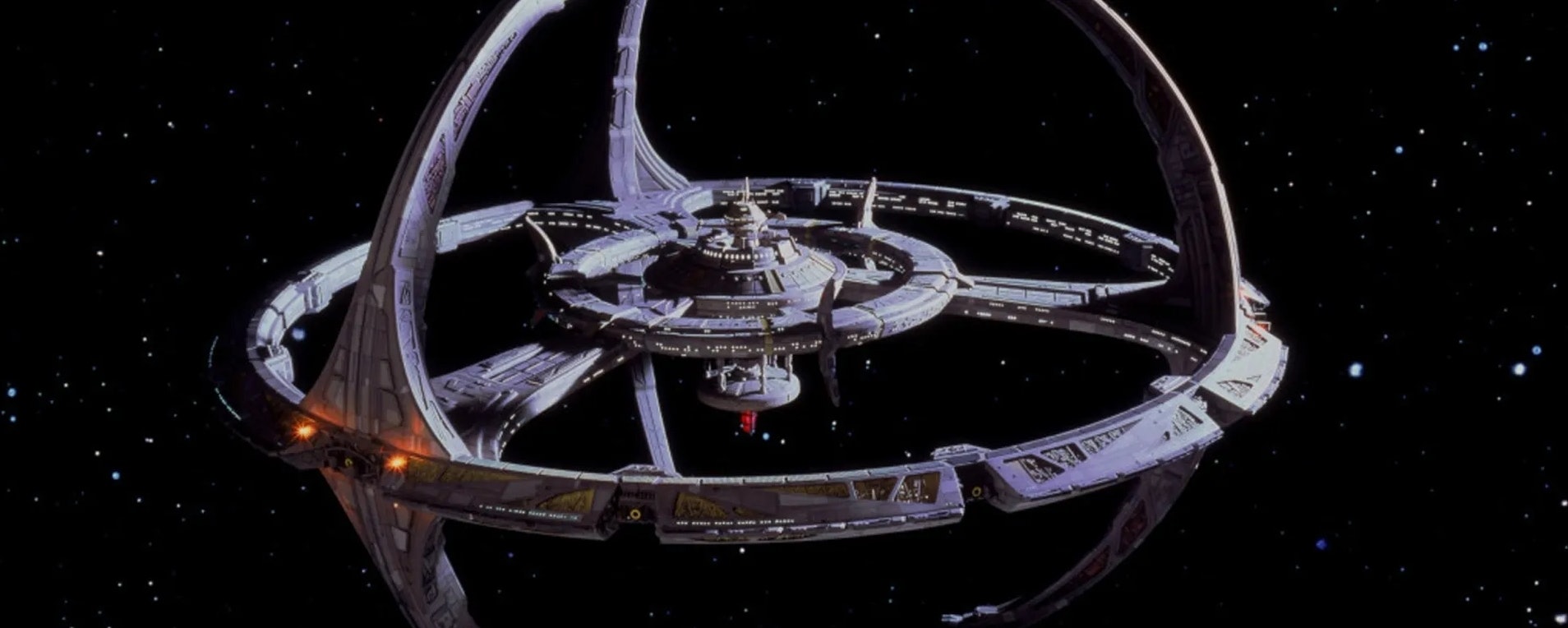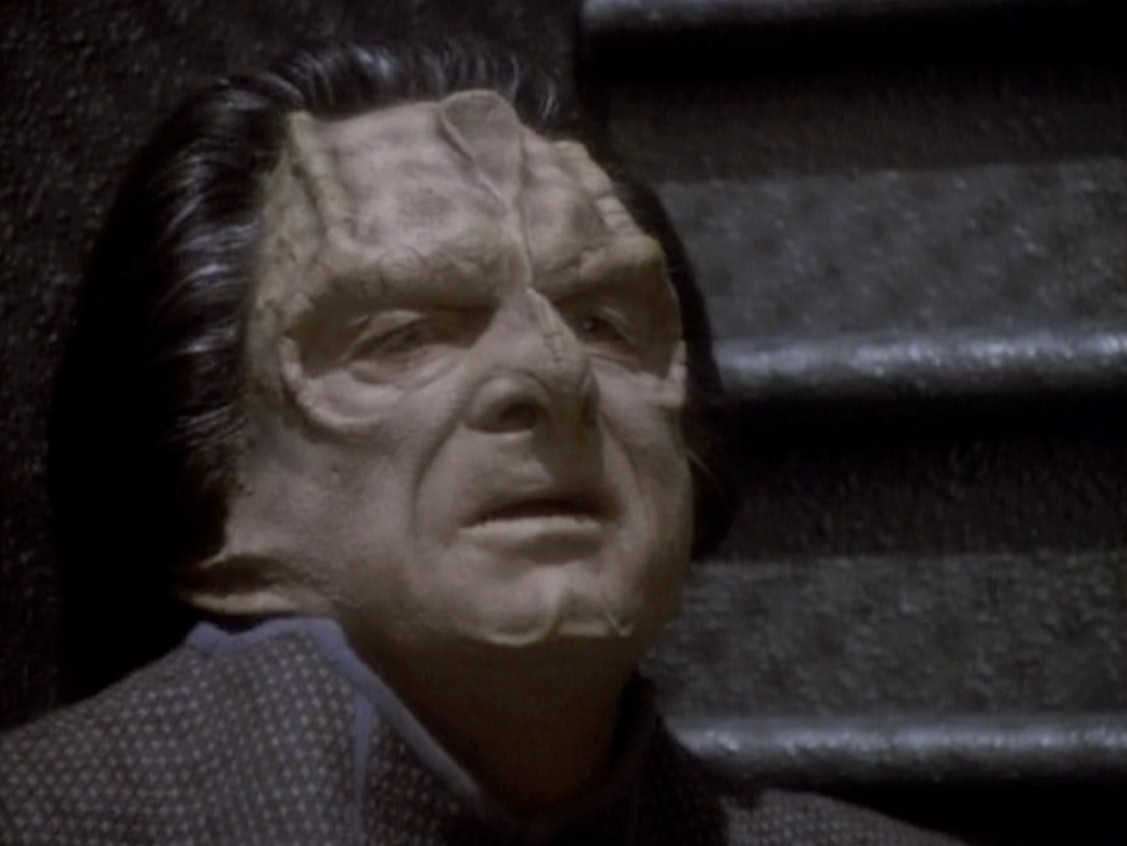
In the first season of Star Trek: The Next Generation, Wesley Crusher is sentenced to death for stepping on a plant.
“Justice,” set on a planet where even the mildest crime is punished with lethal injection, was derided for its ridiculous premise and heavy-handed morality. It’s the low point of a lousy season full of tentative Original Series rehashes, campy theatrics, and painfully infrequent glimpses of the show’s true potential.
Next Generation overcame these growing pains to become a beloved series. By Season 6, duds like “Justice” were a distant memory, and Next Gen was ready to pass on everything it had learned to its spinoff, Deep Space Nine. And so, when DS9 hit the air in 1993, its first season was full of, uh … tentative Next Gen rehashes, campy theatrics, and painfully infrequent glimpses of the show’s true potential. But it had one thing the first season of Next Gen lacked: “Duet.”

Deep Space Nine was the fourth Star Trek series, but the first to re-envision the premise; rather than travel the stars in search of adventure, adventure would come to our crew. Located above Bajor, a planet emerging from decades of brutal occupation by the neighboring Cardassian Union, the backwater posting of Deep Space Nine becomes a crucial strategic center upon the discovery of a wormhole to the far-flung Gamma Quadrant.
It took a while for DS9 to figure out what it wanted to do with its setting, as alien of the week plots bumped up against Bajorian politics, a virus that made everyone talk gibberish, and an appearance from Next Gen trickster god Q that prompted our hero, Commander Sisko, to essentially tell the audience, “I am not Captain Picard. I am a new character. Please adjust your expectations accordingly.” You could tell what DS9 was trying to accomplish — darker storylines, protagonists with different perspectives who didn’t always agree on what was right — but it often failed.
After a strong pilot, “Duet” was the first episode to grasp the potential of DS9’s setting. A fixed locale has disadvantages, but it also has one big strength: Consequences don’t vanish when our heroes zoom off to their next adventure. Major Kira Nerys (Nana Visitor) spent long, hard years resisting Cardassian occupation, and when DS9 begins, she’s the unwilling Bajorian liaison to Sisko and the rest of our Federation cast. But when a mysterious Cardassian appears on the station, Kira realizes he must have worked at the infamous Gallitep labor camp, and her past comes rushing back.

At first, Aamin Marritza (Harris Yulin) claims to be innocent, and when his presence at Gallitep is proven, he admits only to being a lowly file clerk. But Kira keeps digging and discovers the Cardassian is really Gul Darhe’el, the infamous camp commandant dubbed the Butcher of Gallitep. With the truth revealed, Darhe’el gleefully brags about the thousands he murdered, and shakes Kira by pointing out that not all her actions in the resistance were heroic.
This could have easily become a tawdry morality play where Kira overcomes bureaucratic obstacles to make the sneering villain face justice, but then there’s another twist. Our supposed ruthless war criminal is revealed to really have been just a cowardly clerk all along, one haunted by the atrocities he witnessed and desperate to masquerade as a monster so Bajor can impose some measure of justice on his people.
That extra layer, along with powerful performances by Visitor and Yulin, elevate “Duet” to Star Trek greatness. Visitor’s work is crucial to establishing a tough but moral character who’s realizing her world is no longer black and white, and Yulin’s only appearance in Star Trek is a complete commitment to a deeply scarred man trying to drag his people into the light. A blunt ending denies the episode perfection, but it was still the first sign of the heights DS9 was capable of achieving. By fixing the station above Bajor, and making the relationship between the wounded planet and the empire that occupied it central to many of the storylines to follow, it proved the upsides of letting stories simmer.
“Duet” remains powerful as an episode of television, but it’s also an intriguing relic of how TV was made. The 19th episode in a 20-episode season, it’s long been cited by fans as a key stop on DS9’s journey to getting good. It’s a taut meditation on the moral dimensions of genocide that came after our crew was forced to play a magical board game and deal with an alien manifesting itself as Rumpelstiltskin, but in today’s streaming environment, you don’t get 19 episodes to hook viewers; you don’t even get 19 minutes.
A sci-fi drama making a 20-episode season is unthinkable today, and it’s rare for a genre show only afforded eight episodes to dither with the luxury of experimental one-off stories. “Duet” was conceived to save money — most of its 45 minutes are simply Visitor and Yulin talking — but studios now save money with cancellation. If you fail to find your legs, and thus an audience, you are doomed to oblivion.
Many popular television shows would have failed that test, including Deep Space Nine, which went on to become a critical darling. Maybe it’s not the end of the world to miss out on space Rumpelstiltskin episodes, but if shows aren’t given room to grow, then they aren’t given room to succeed. “Duet” is one of the best episodes Star Trek has ever produced, but in the streaming era, it never would have been made at all.







